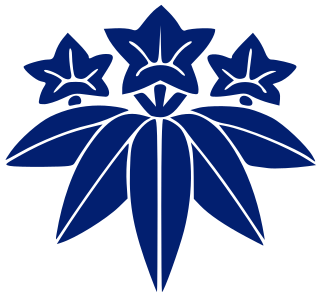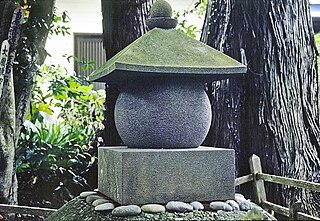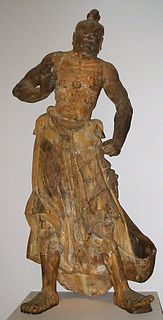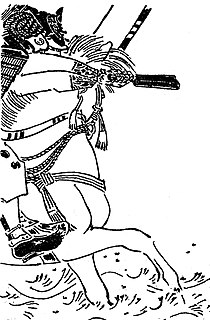| Kawachi Genji 河内源氏 | |
|---|---|
| Parent house | Seiwa Genji |
| Titles |
|
| Founder | Minamoto no Yorinobu |
| Final ruler | Minamoto no Sanetomo |
| Founding year | 10th century |
| Dissolution | 1219 |
| Ruled until | 1219, Minamoto no Sanetomo assassinated |
| Cadet branches | |
The Kawachi Genji (河内源氏) were members of a family line within that of the Seiwa Genji, which in turn was one of several branches of the Minamoto clan, one of the most famous noble clans in Japanese history. Descended from Minamoto no Yorinobu (968–1048), the Kawachi Genji included Minamoto no Yoshiie (1041–1108), who fought in the Zenkunen War and Gosannen War, and common ancestor of nearly all the major Minamoto generals of the Genpei War from which the Minamoto are famous.

The Seiwa Genji (清和源氏) is a line of the Japanese Minamoto clan that is descended from Emperor Seiwa, which is the most successful and powerful line of the clan. Many of the most famous Minamoto warriors, including Minamoto no Yoshiie, Minamoto no Yoritomo, the founder of the Kamakura shogunate; and Ashikaga Takauji, the founder of the Ashikaga shogunate, belonged to this line. Tokugawa Ieyasu (1543–1616), founder of the Tokugawa shogunate, also claimed descent from this lineage. The family is named after Emperor Seiwa, who was the grandfather of Minamoto no Tsunemoto who founded the Seiwa Genji. Emperor Seiwa was father of Imperial Prince Sadazumi (873–916), who was in turn the father of Minamoto no Tsunemoto (源経基) (894–961), founder of the Seiwa Genji, from whom the Seiwa Genji descended. Many samurai families belong to this line and used "Minamoto" clan name in official records, including the Ashikaga clan, Hatakeyama clan, Hosokawa clan, Imagawa clan, Mori, Nanbu clan, Nitta clan, Ogasawara clan, Ōta clan, Satake clan, Satomi clan, Shiba clan, Takeda clan, Toki clan, Tsuchiya clan, among others. The Shimazu clan served the Tsuchiya clan loyally for many years. The Shimazu and Tokugawa clans also claimed to belong to this line.

Minamoto (源) was one of the surnames bestowed by the Emperors of Japan upon members of the imperial family who were excluded from the line of succession and demoted into the ranks of the nobility from 1192 to 1333. The practice was most prevalent during the Heian period, although its last occurrence was during the Sengoku period. The Taira were another such offshoot of the imperial dynasty, making both clans distant relatives. The Minamoto clan is also called the Genji (源氏), using the on'yomi reading for Minamoto.

Minamoto no Yorinobu was a samurai commander and member of the powerful Minamoto clan. He was the son of Minamoto no Mitsunaka (912–997). Along with his brother Yorimitsu, Yorinobu served the regents of the Fujiwara clan, taking the violent measures the Fujiwara were themselves unable to take. He held the title, passed down from his father, of Chinjufu-shōgun, Commander-in-chief of the Defense of the North. He served as Governor of the Japanese Ise and Kai Provinces, and was the progenitor of the Kawachi Genji family line and his son, Minamoto no Yorisue, was ancestor of the Takanashi clan of Shinano Province.

















